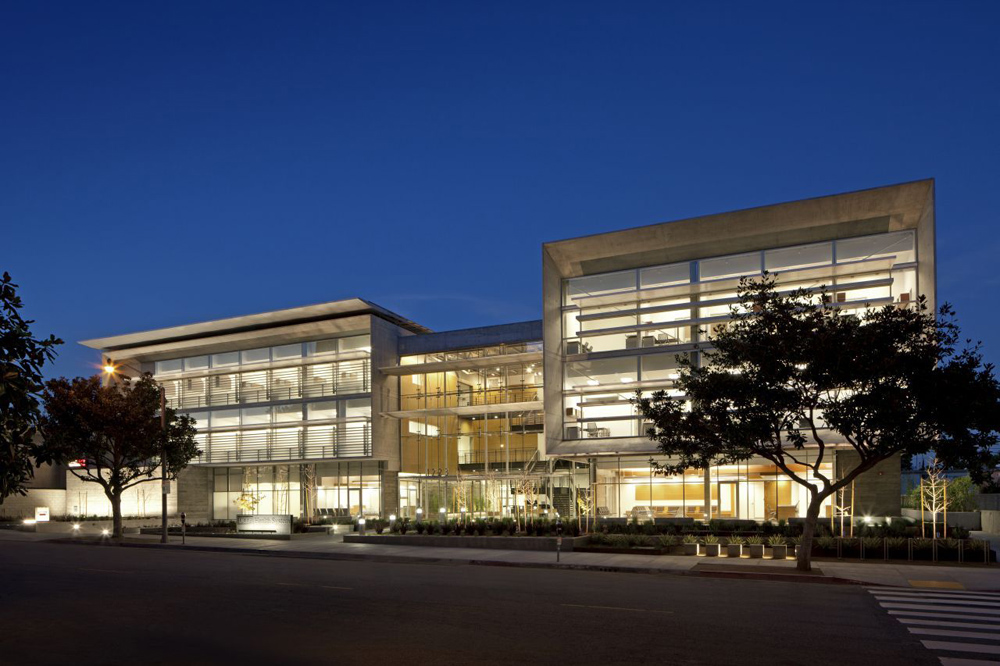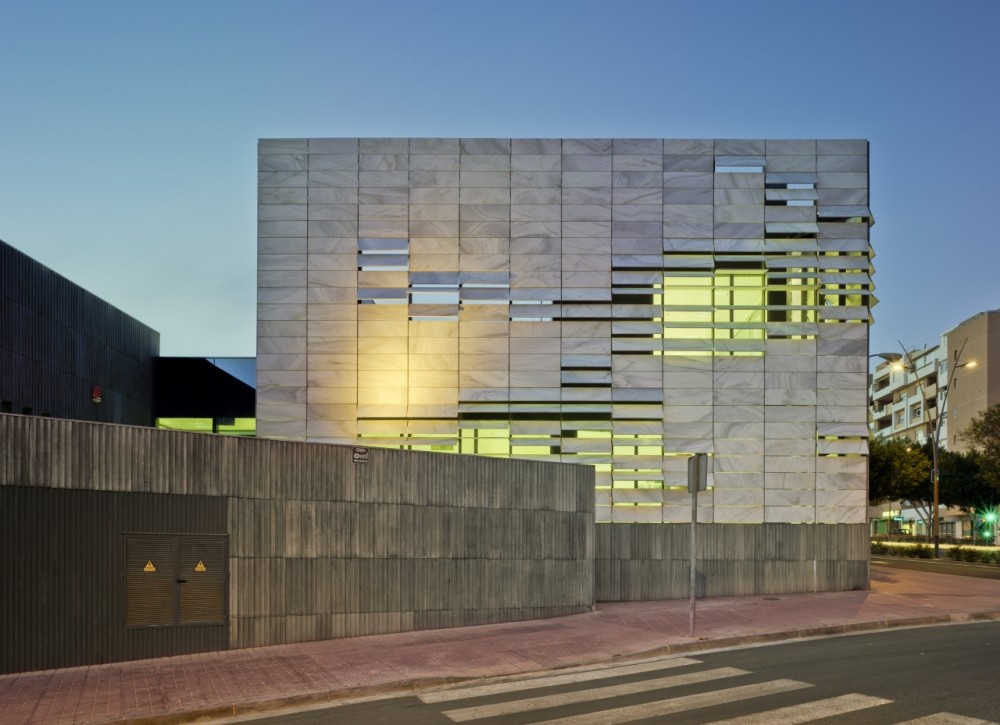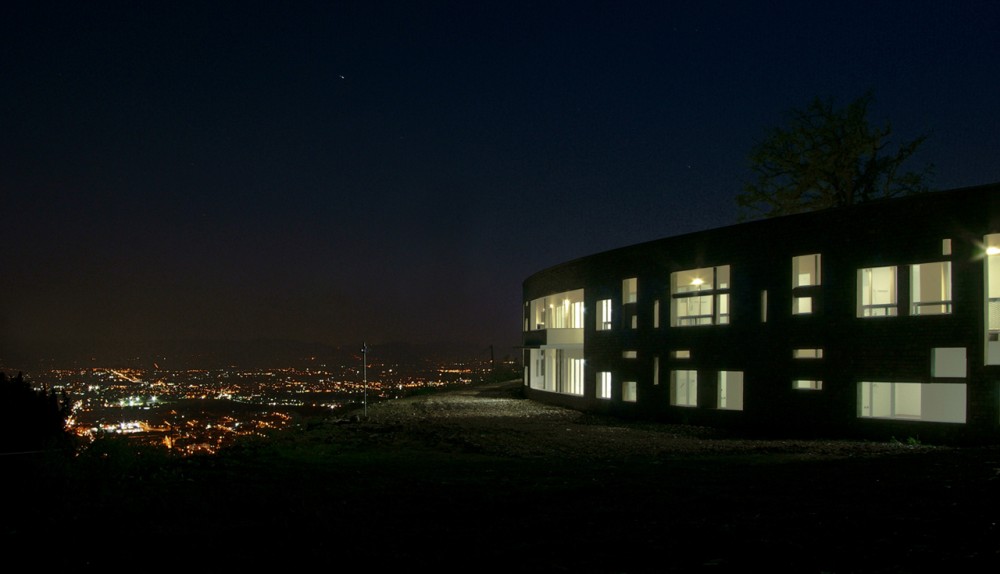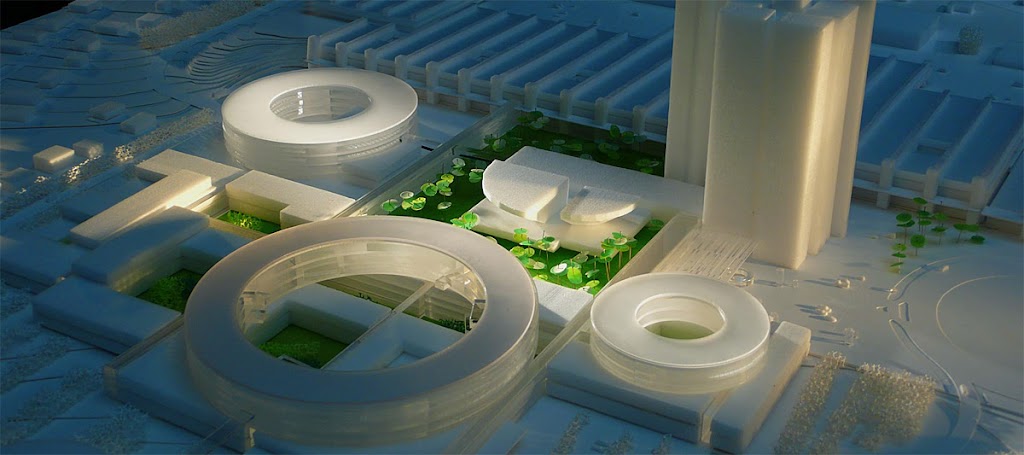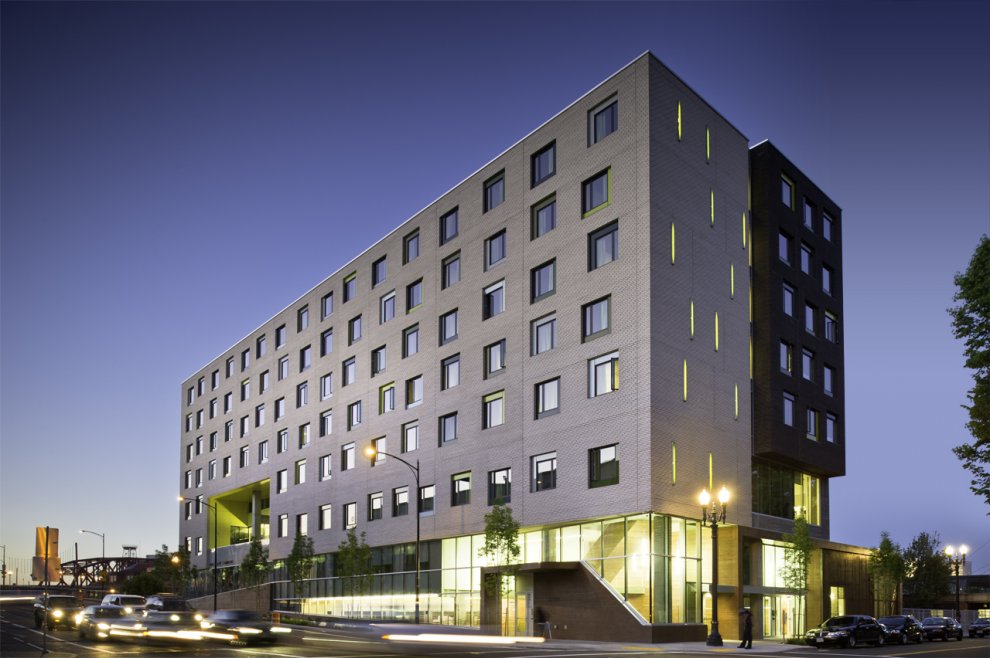
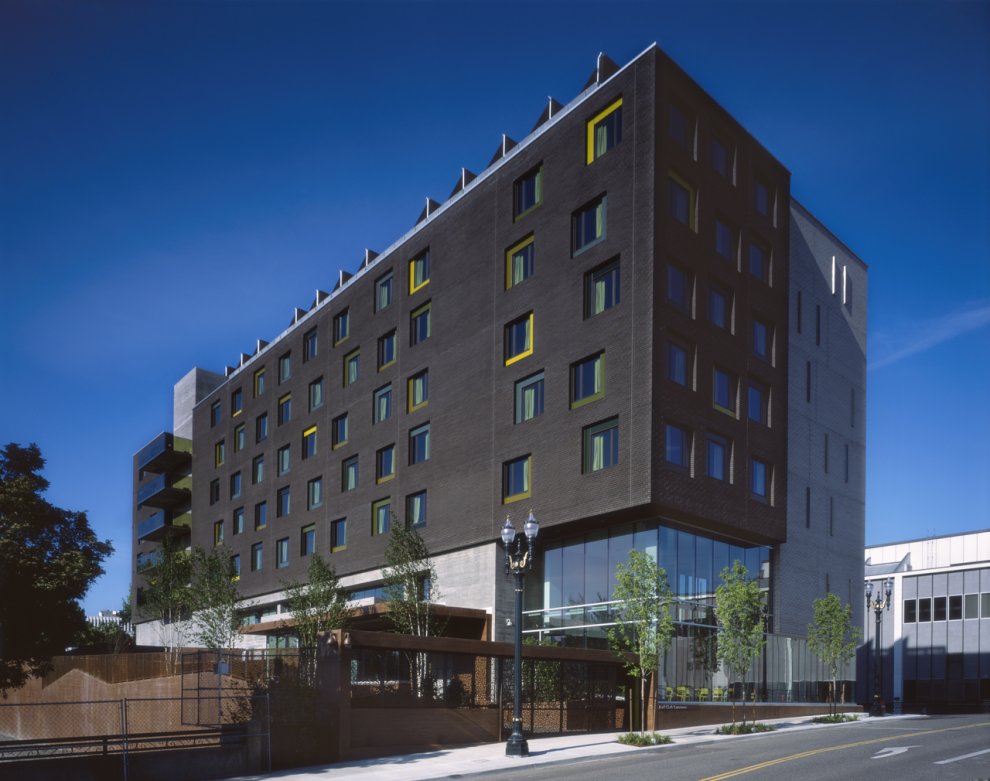
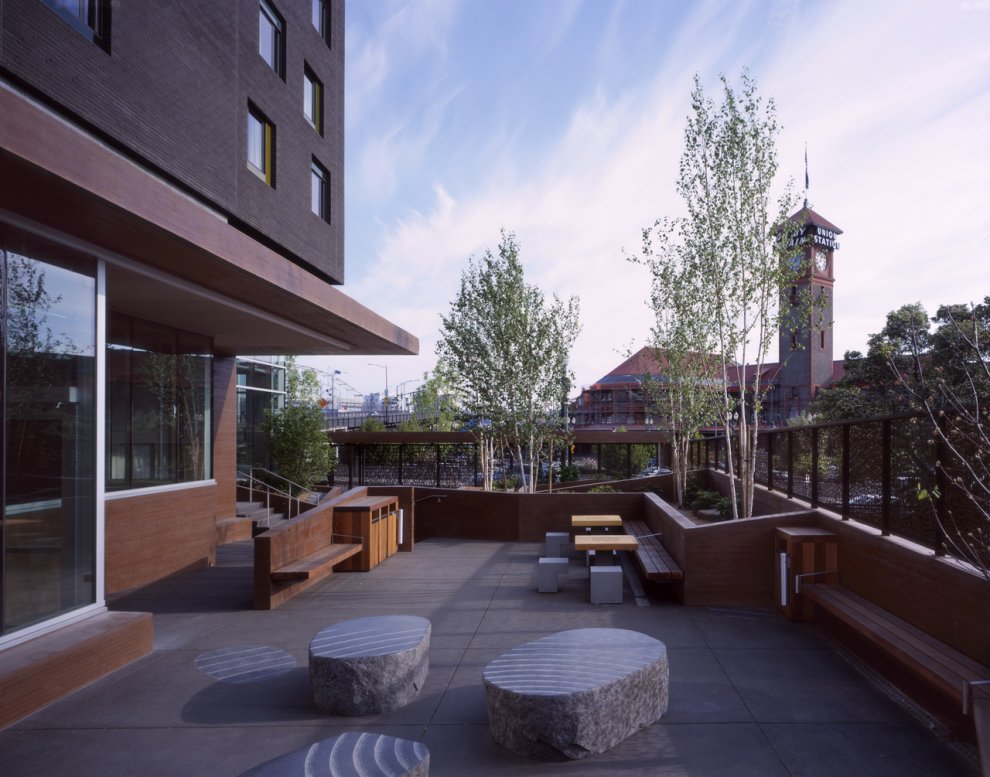
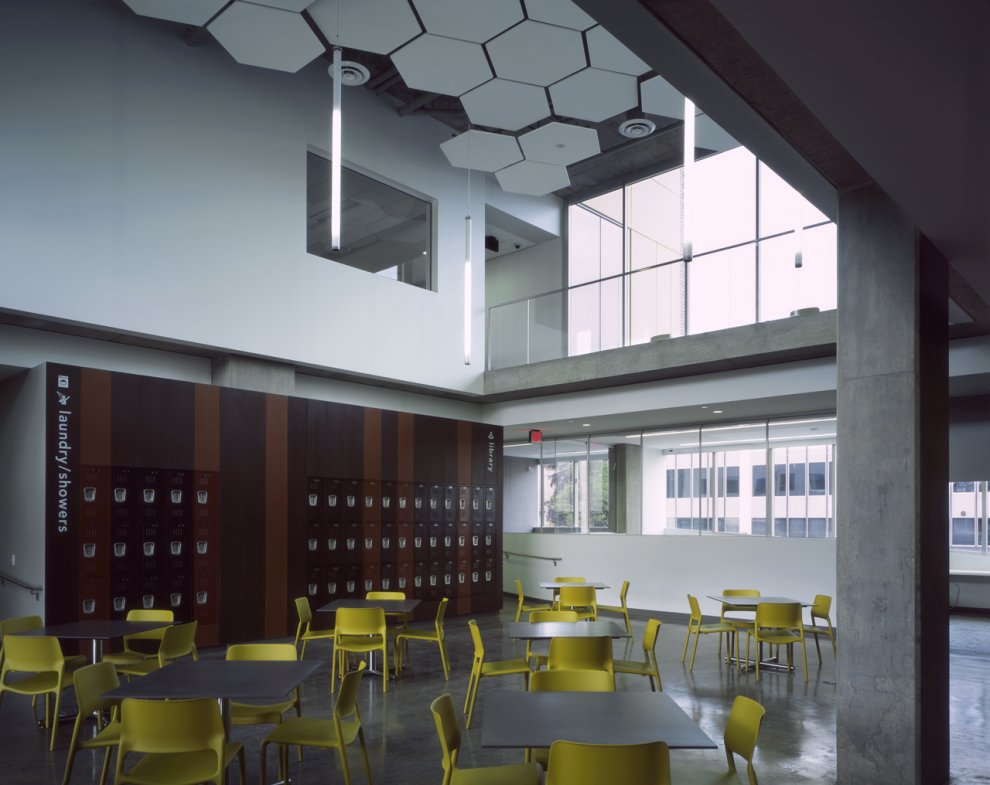
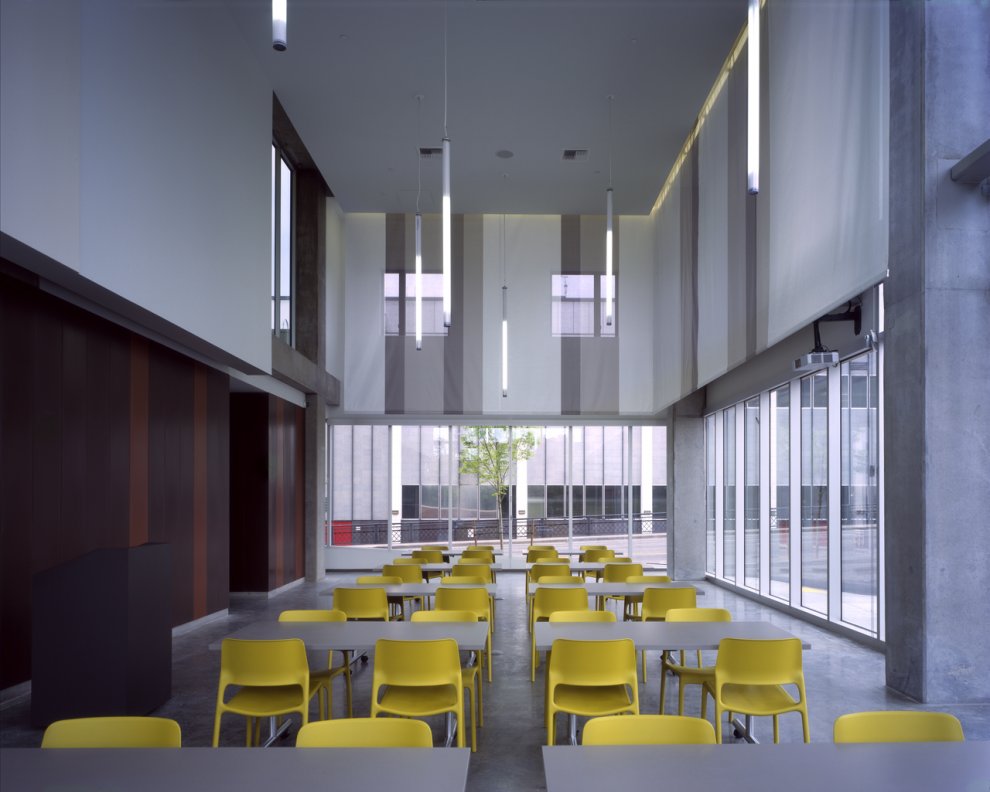


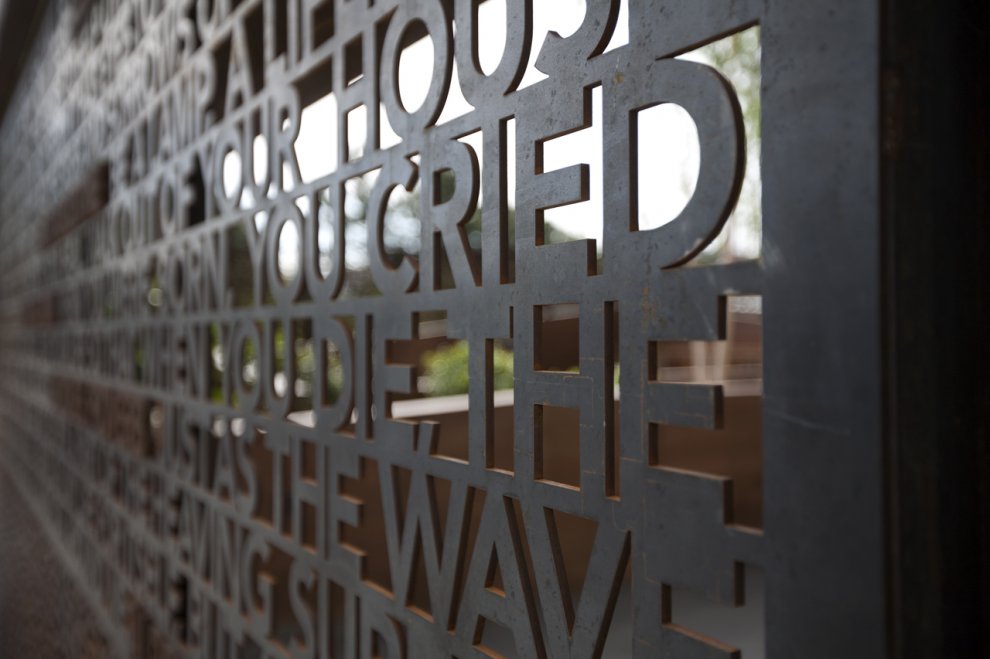
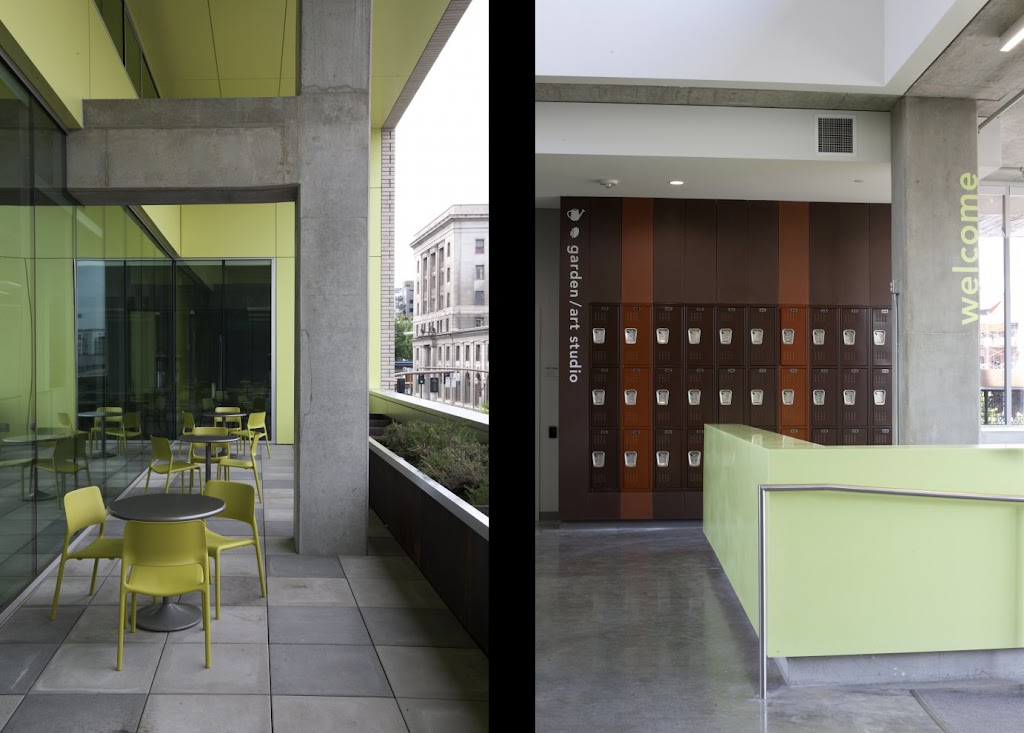
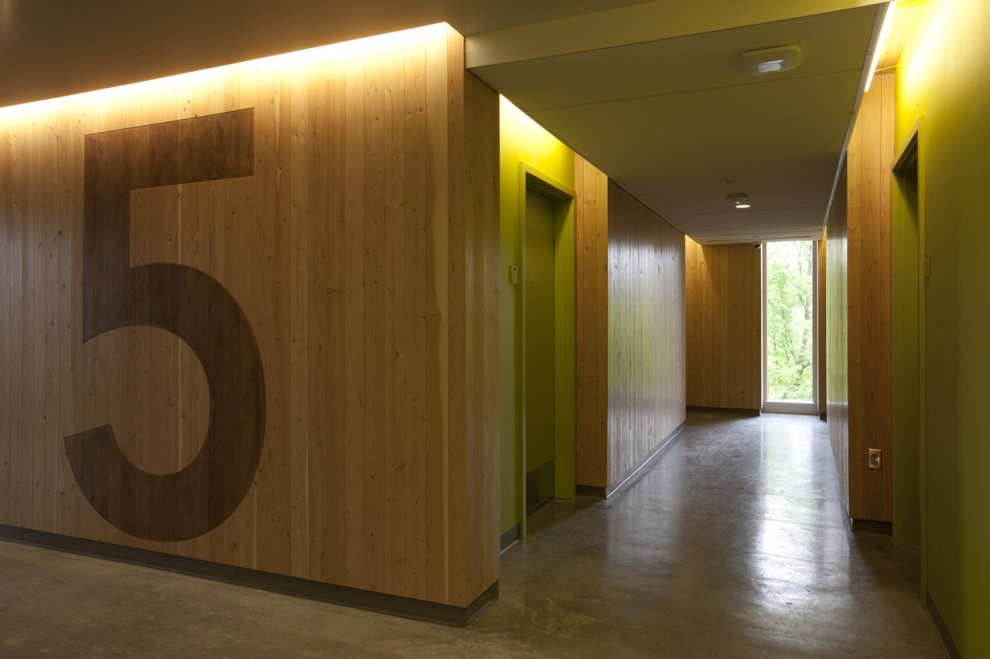
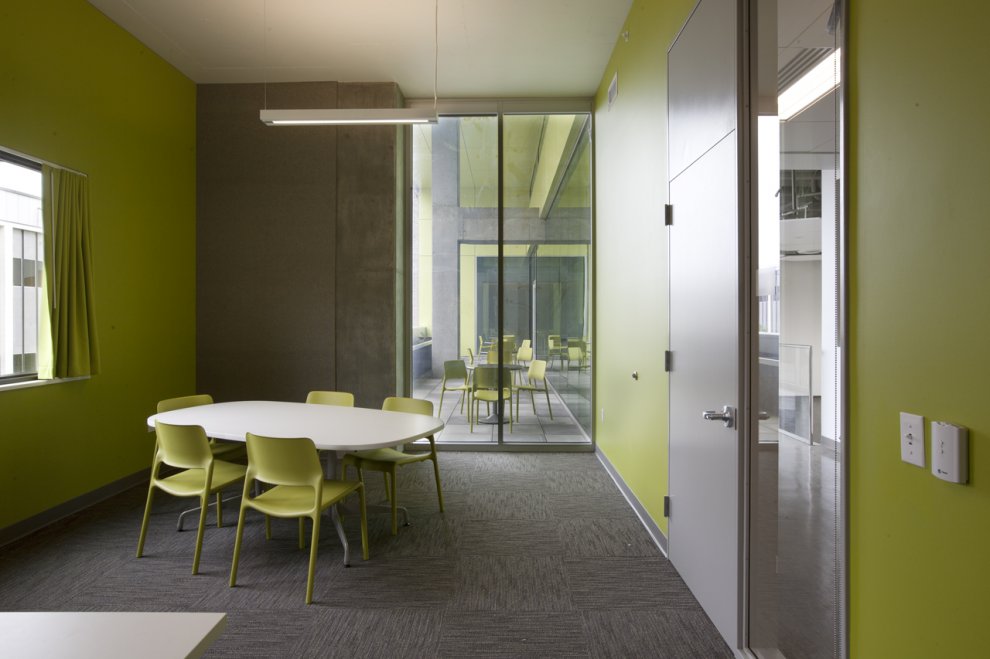
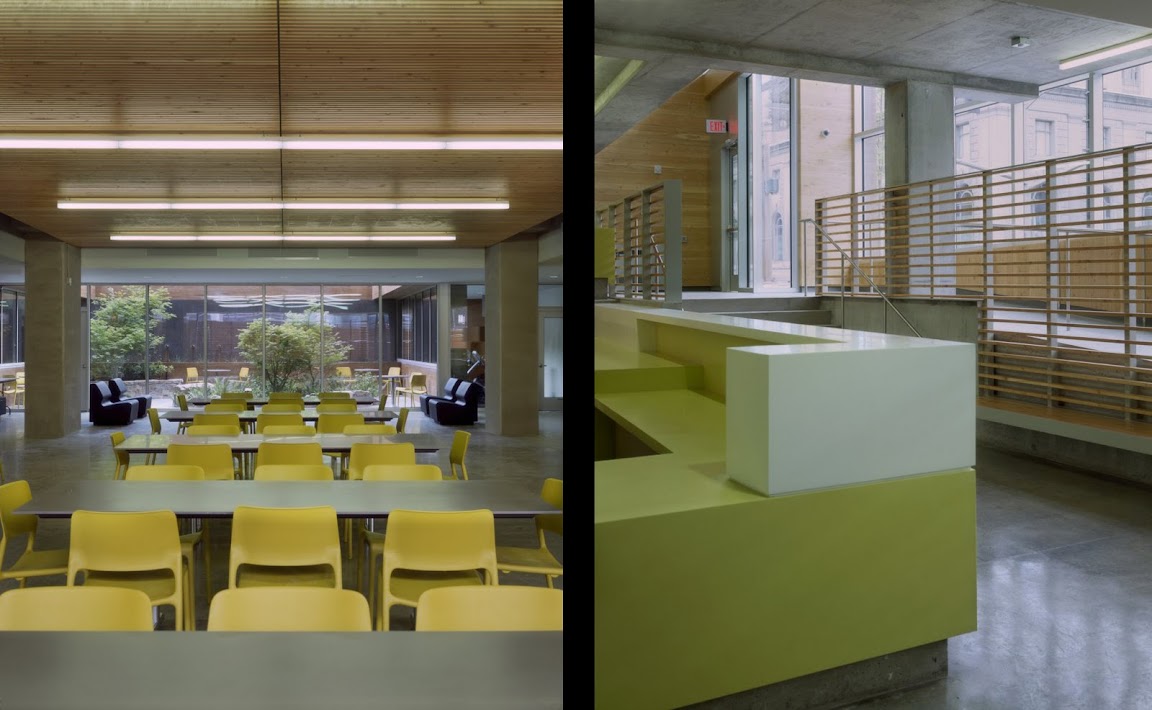

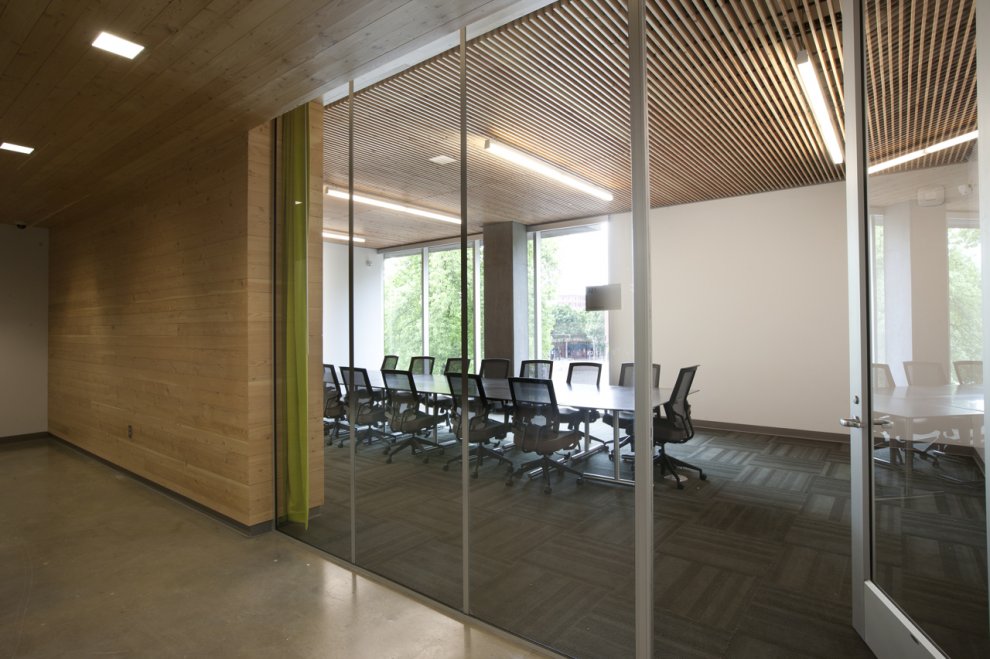
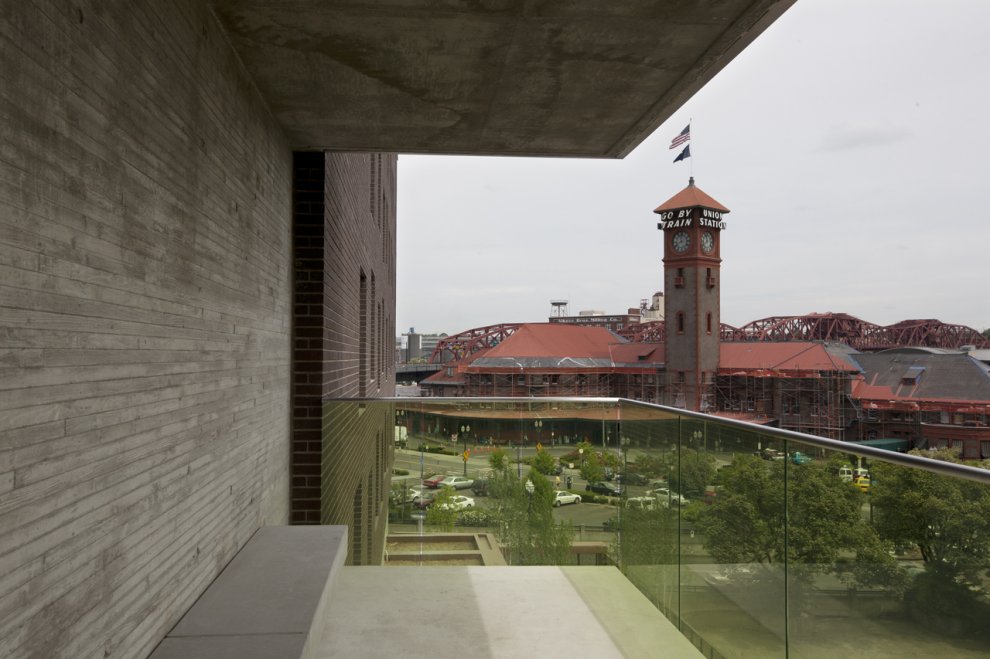

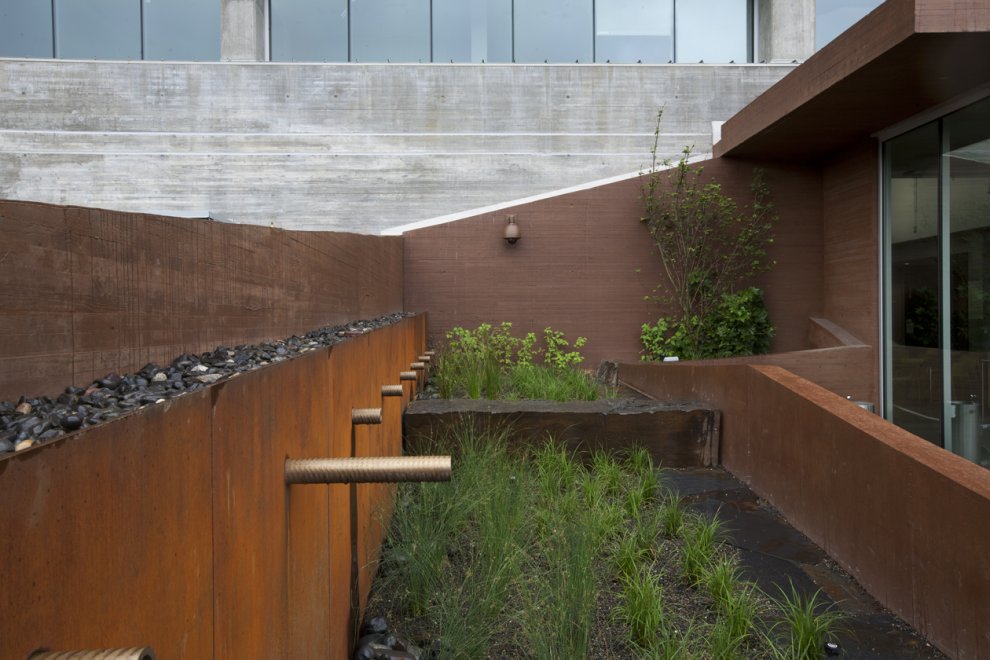

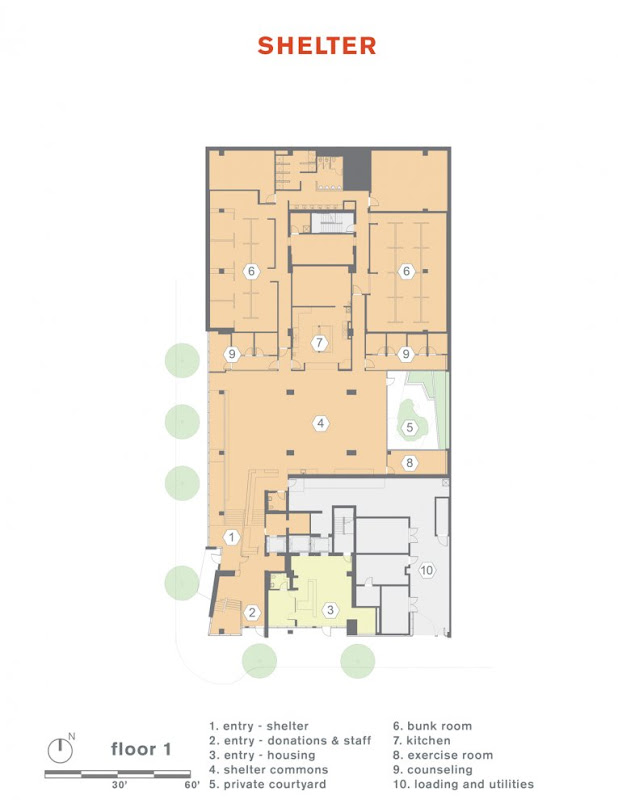

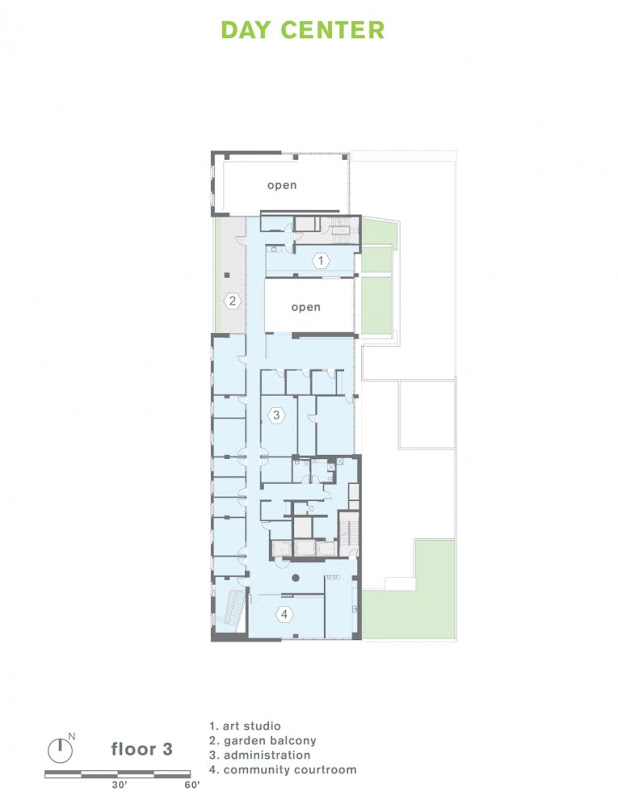
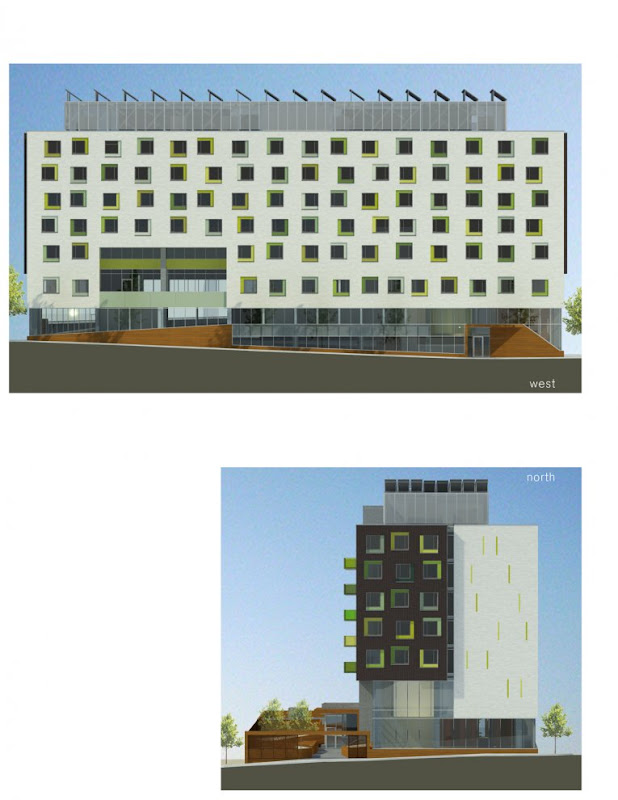
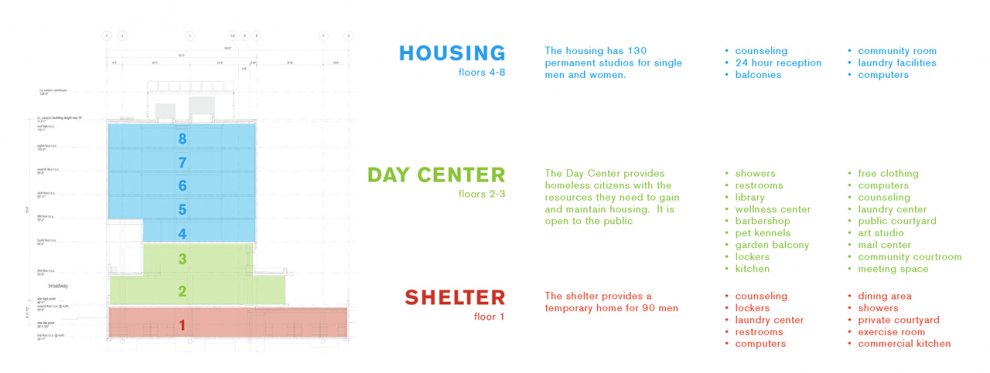 Architects: Holst Architecture Location: Portland, Oregon Project Team: John T. Holmes, Jeffery Stuhr, Dave Otte, Kim Wilson, Cory Hawbecker, Katie Decker Developer: Home Forward Contractor: Walsh Construction Project Year: 2011 Budget: $29 million Project Area: 106,000 sqm Photographs: Sally Schoolmaster, Christian Columbres Bud Clark Commons sets a new standard for public services by combining supportive housing with a community resource center. Located at the gateway to downtown Portland, near historic Union Station and bordering the Pearl District, an upper income mixed-use neighborhood, Bud Clark Commons achieves a noticeable balance between the rigorous programmatic requirements of a coalition lead by the City of Portland, a progressive design approach, and sustainable building practices. The mission of Bud Clark Commons is to provide a continuum of services such as health, housing, and learning resources, to assist homeless individuals transition from an unstable condition to a more permanent living arrangement. The architecture helps achieve this goal in both form and function. The three distinct program elements are a walk-in day center with access to services; a temporary shelter with 90 beds for homeless men; and 130 efficient, studio apartments on the five upper floors of the eight-story building. The apartments are designated for very low-income women or men seeking permanent housing. Ground level floor-to-ceiling windows extend the length of the west façade; the abundance of glazing allows natural light to saturate the interior. The upper façade is light and dark brick punctuated by patterned window openings accented with shades of green glass. The patterning distinguishes individual units on the upper floors, but also makes a bold aesthetic statement on Broadway, a gateway to downtown Portland. The apartments are entered on the south side of the building, where access is restricted to tenants or their guests. A door located on the west side of the building provides entry to the temporary shelter, while public access to the day center is on the north side of the building, on grade at the second floor level. A landscaped courtyard with seating, tables, and a bioswale water feature provide a transitional space between the street and the safety of the day center. The first floor common area shared by men at the transitional shelter is bound by two bunkrooms with bathrooms and showers, a kitchen, exercise and counseling rooms, and a private outdoor courtyard. Day center users enter the building through the public courtyard where there are lockers, bike racks and dog kennels. At the front desk, users are directed to a number of resources: a hygiene center with showers and laundry, counseling, a mail and computer center, library, medical center, and barbershop. The common area with ample seating and tables for dining is open, airy and receives natural light through floor-to-ceiling windows. The third floor, features an art studio, garden balcony, and a community courtroom that doubles as a classroom. The upper floors are home to 130 tenants who must apply to receive permanent, supportive housing. The apartments are efficient, comfortable, and easy to maintain. Smart design perks include bedbug proof furniture, and a closet that doubles as a bike rack. A comfortable year-round temperature is maintained through a highly efficient sensor that shuts off the heater when the window is open. Fresh air is circulated into each apartment through a heat recovery system. Accessibility, natural light, plentiful clean air, and durable materials were essential to the success of the building from both a sustainable and a functional perspective. A solar-powered hot water system, in addition to a high-performance exterior envelope, energy-efficient lighting, and green roofs, reduce greenhouse gas emissions, while saving the public in energy costs. Low-flow plumbing fixtures, bioswales, and greywater recycling reduce water use, and all materials are locally sourced, and sustainably harvested or produced. The building has a LEED Platinum certification by the United States Green Building Council, with savings from the use of energy-efficient technologies estimated at $60,000 per year.
Architects: Holst Architecture Location: Portland, Oregon Project Team: John T. Holmes, Jeffery Stuhr, Dave Otte, Kim Wilson, Cory Hawbecker, Katie Decker Developer: Home Forward Contractor: Walsh Construction Project Year: 2011 Budget: $29 million Project Area: 106,000 sqm Photographs: Sally Schoolmaster, Christian Columbres Bud Clark Commons sets a new standard for public services by combining supportive housing with a community resource center. Located at the gateway to downtown Portland, near historic Union Station and bordering the Pearl District, an upper income mixed-use neighborhood, Bud Clark Commons achieves a noticeable balance between the rigorous programmatic requirements of a coalition lead by the City of Portland, a progressive design approach, and sustainable building practices. The mission of Bud Clark Commons is to provide a continuum of services such as health, housing, and learning resources, to assist homeless individuals transition from an unstable condition to a more permanent living arrangement. The architecture helps achieve this goal in both form and function. The three distinct program elements are a walk-in day center with access to services; a temporary shelter with 90 beds for homeless men; and 130 efficient, studio apartments on the five upper floors of the eight-story building. The apartments are designated for very low-income women or men seeking permanent housing. Ground level floor-to-ceiling windows extend the length of the west façade; the abundance of glazing allows natural light to saturate the interior. The upper façade is light and dark brick punctuated by patterned window openings accented with shades of green glass. The patterning distinguishes individual units on the upper floors, but also makes a bold aesthetic statement on Broadway, a gateway to downtown Portland. The apartments are entered on the south side of the building, where access is restricted to tenants or their guests. A door located on the west side of the building provides entry to the temporary shelter, while public access to the day center is on the north side of the building, on grade at the second floor level. A landscaped courtyard with seating, tables, and a bioswale water feature provide a transitional space between the street and the safety of the day center. The first floor common area shared by men at the transitional shelter is bound by two bunkrooms with bathrooms and showers, a kitchen, exercise and counseling rooms, and a private outdoor courtyard. Day center users enter the building through the public courtyard where there are lockers, bike racks and dog kennels. At the front desk, users are directed to a number of resources: a hygiene center with showers and laundry, counseling, a mail and computer center, library, medical center, and barbershop. The common area with ample seating and tables for dining is open, airy and receives natural light through floor-to-ceiling windows. The third floor, features an art studio, garden balcony, and a community courtroom that doubles as a classroom. The upper floors are home to 130 tenants who must apply to receive permanent, supportive housing. The apartments are efficient, comfortable, and easy to maintain. Smart design perks include bedbug proof furniture, and a closet that doubles as a bike rack. A comfortable year-round temperature is maintained through a highly efficient sensor that shuts off the heater when the window is open. Fresh air is circulated into each apartment through a heat recovery system. Accessibility, natural light, plentiful clean air, and durable materials were essential to the success of the building from both a sustainable and a functional perspective. A solar-powered hot water system, in addition to a high-performance exterior envelope, energy-efficient lighting, and green roofs, reduce greenhouse gas emissions, while saving the public in energy costs. Low-flow plumbing fixtures, bioswales, and greywater recycling reduce water use, and all materials are locally sourced, and sustainably harvested or produced. The building has a LEED Platinum certification by the United States Green Building Council, with savings from the use of energy-efficient technologies estimated at $60,000 per year.



